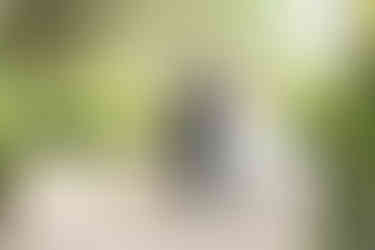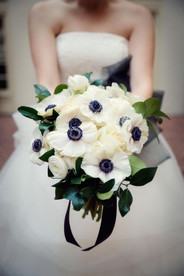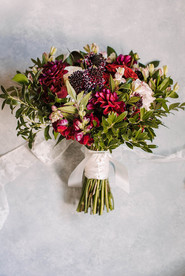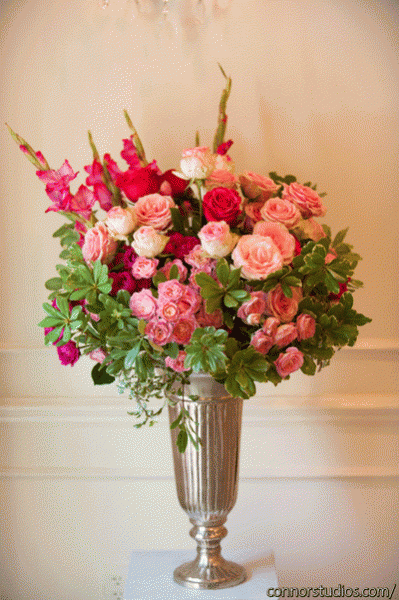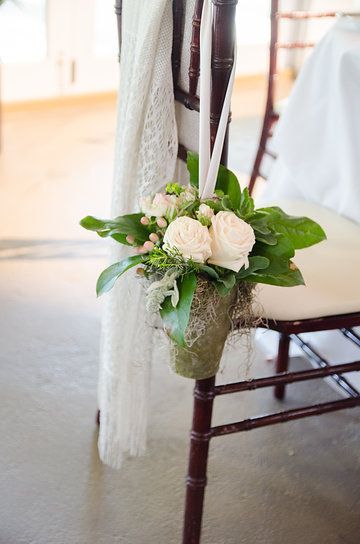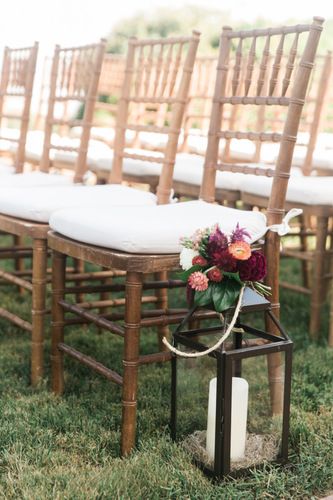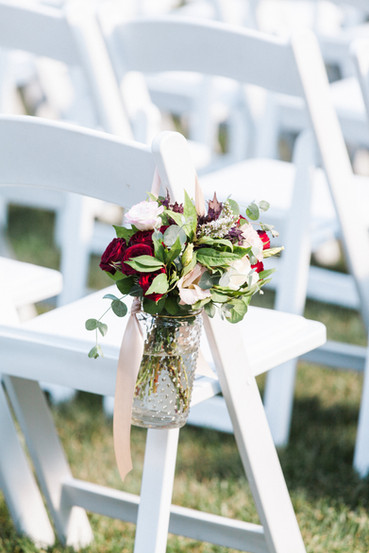Is Zero-Waste Possible for Wedding Flowers?
- Lindsey Walsh
- Mar 11, 2023
- 7 min read
Updated: Apr 3, 2023
In short, yes it is possible. However, it takes some planning and the right florist.
Let's start with a definition, as every one may not be familiar with the term "zero-waste". Below is an official definition from the Zero Waste International Alliance. Lots of other organizations (Like the EPA) have their definitions too.
“Zero Waste: The conservation of all resources by means of responsible production, consumption, reuse, and recovery of products, packaging, and materials without burning and with no discharges to land, water, or air that threaten the environment or human health.” -Zero Waste International Alliance
For simplicity, I like to think of it as 'hey, let's stop sending stuff to landfills!'
Now I have a growing number of friends that try to be zero-waste or near-zero-waste and it's really hard. Realistically, consumers can't easily achieve it on their own and companies have to play a role in making it happen. I also watched a few friends try and achieve near-zero-waste weddings and I know that feels impossible.
So, on their behalf, I wanted to share how achieving zero or near-zero-waste wedding flowers can be possible. It's not a given, but it is achievable. It can be great for local economies and encourage local agriculture.
We'll need a made-up wedding to use as an example.
I think it's important to start with a realistic wedding. So, let's imagine a couple getting married at a vineyard in Northern Virginia. They're having a ceremony and reception with 120 guests. They're getting married in October and want an elegant rustic, slightly boho vibe. Given the ceremony is outside overlooking the vineyard, they want the flowers to complement the autumn colors.
They'd like the following decorations for their wedding:
Personal Flowers
1 bridal bouquet
4 bridesmaids bouquet
2 mom posies
7 boutonnieres
Ceremony Flowers
1 flower-covered arch
2 alter arrangements
8 aisle arrangements
Reception Flowers
1 farm-style head table garland
8 cocktail table arrangements
13 round guest table arrangements
1 Photo Booth backdrop with props
200 glass votives/candles
Flowers for the cake
What types of flowers can they use?
So, we recognize most couples want custom floral designs to meet the aesthetic they've chosen for their wedding. This means we always start with photos they send us of styles they like. Working from this base, we can help them identify the best flowers that are in season.
Because we've been doing this for almost 30 years, we have a great understanding of what flowers work best for weddings and thrive in the mid-Atlantic region. We always tell couples not to worry if they don't know anything about flowers, that's what the florist is for!
Given the fall color scheme, for this wedding, we'd likely recommend a mix of dahlias, hydrangeas, berries, elegant grasses, and sedums, though there are many other options out there as well!
Ok, it's wedding day!
The couple is getting ready at the vineyard so we first stop by the groom and groomsmen and drop off the boutonnières. Then we'll head over to where the bride is getting ready. When we arrive she's typically in the process of getting her hair and makeup done. We'll bring her bouquet in along with the bridesmaids and often mom posies.
Boutonnières are typically made with flowers, floral tape, and floral wiring. They're attached with a simple straight pin.
Our bouquets are most often hand-tied. This means other than the flowers, they only need two rubber bands, a few pins, and silk or natural fiber biodegradable ribbon.
Next up, ceremony flowers.
Next, we'll head out to the ceremony site and get to work on the arch. If we're using one of our own, we'll assemble it and put it up. Our arches and chuppahs are custom-made by local woodworkers and are very durable and high quality. We can use them for years and they look great. For an alternative aesthetic, we also offer metal arches with are also reusable.

In October, it is likely not too hot, so we may be able to get by without a water source for the flowers. If this is the case, we can weave the flowers and greens onto the arch using a reusable 'cage'. It'll be fully covered once we're done. If it's warm and the flowers are likely to wilt we'll need a water source to keep them fresh or we’d need to pay extra attention when selecting the botanicals used.
Another option we have are reusable plastic tubes that go onto the end of each stem. They're like baby vases for each flower. We have a bunch and can reuse these over and over. The only challenge with using individual water sources for each stem is they are much more time intensive. Because that would require an extra designer on-site day of, this option is more expensive.
As part of the planning process, we often have couples come out to our farm to discuss their style and preferences. When here, couples can explore our hardware options for altar arrangements. Because we reuse our containers, couples get the benefit of avoiding single-use plastic and having nicer containers for their flowers. As long as we pick a container with the right shape, use long-stemmed botanicals, and build in a 'cage' for support, we can likely achieve a zero-waste aesthetic that works for the couple.
If the couple has their hearts set on a particular look with specific flowers, we can work with them to achieve a near-zero-waste balance here too.
We recommend hanging containers of flowers from chairs or hooks for the zero-waste aisle flowers. This is easily done and the arrangements can be repurposed for the cocktail tables.
The ceremony has just ended and the newlyweds have been whisked off by the photographer for formal photos. The rest of the guests have headed to the reception site for locally-sourced wine after having eyed the grape vines on a glorious October afternoon.
On to the wedding reception.

Because the couple likely will not be around to welcome the guests, they'd like to have an inviting welcome installation with their new family name, a guest book, and a description of the menu. Certainly, they don't want anyone wondering if they've found the right spot or forgetting to sign the book!
For the flowers, we'd use a metal or glass vase with a tight opening on top and long-stemmed flowers and botanicals. It's also possible to build arrangements directly on the table or in custom bases like carved-out logs. We'd typically place six or so votives on the table to add ambiance. (LED votives are an option)
Now that the guest has signed the book and found the bar, they've headed over to a high-top table to see old friends. Here, we'd repurpose the aisle arrangements because we would have intentionally designed them to be multi-purposed. (It saves the couple money and us work!)

Cocktail hour is over and the couple has found their way to the head table- a long farmhouse-style table. They wanted the head table to be special, so we would lay a mix of flowers, greens, and candles down the center over rented natural fiber linens.

For the round guest tables, we'd likely recommend the cluster style as it is the easiest to achieve zero waste with and offers a lot of unique ‘texture’ to the overall feel of the reception site.

Behind the sweetheart or head table, we recommend using a fabulous backdrop to set the stage. Then, after dinner, think about moving the sweetheart table and using it for a photo backdrop.
Now, everyone is gathering for the cake-cutting. Fortunately, this is the easiest one from the perspective of a florist because they are normally laid directly onto the cake.
After a wonderful evening of celebration, everyone is tired and ready to be off to the after-party. The couple can look over their shoulder as they exit to the applause of their friends and smile.

Why? Because they had an awesome wedding and they don't need to worry about where the flowers are going. Instead, they can know we'll come to pick up all the candles, flowers, and containers at the end of the night.
Once back to the farm, we'll pull the flowers- repurpose them or enjoy them for a few days. After the flowers are spent we compost them. This is great for us because it enables us to keep our soil strong and will ensure next year's flowers are just as beautiful.
The containers get washed and go back on the shelf. The used votives get put into the freezer. Once cold, we pop out the wax and wash the glass for reuse. Given between my sister and me, we have 5 daughters- it is never hard to find kiddos willing to use wax in a craft project.
So what does that leave? Well, if the couple took the bouquets with them and the guys were still wearing their boutonnières, then that leaves them with a handful of pins, some ribbon, a few rubber bands, and maybe some wire.
I'm guessing anyone who is asking us about zero-waste can find a home for these items. For the bridal bouquet, consider up-cycling it into personalized art by having it dried and framed. We don’t offer this service but can help you find artisans who do if you’d like.
Oh, and as I mentioned earlier, we believe sustainable design is the company's responsibility, so we'll do as much of this as we can even if the couple doesn't think to ask. Growing Wild Floral Co. doesn’t claim to be perfect and there is still opportunity for improvement, but we’re committed to the environment and cradle-to-cradle design.
Until next time, I’ll be digging in the dirt!
All the best,
Lindsey
This blog is a passion project where we explore all the earth-loving potential of weddings. Think of this as a fun and light-hearted place to find inspiration and ideas.
We hope you enjoy it as much as we do!
- Lindsey & Barbara









